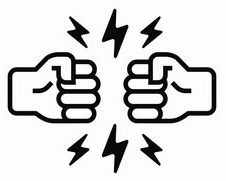How do you find unit vectors in spherical coordinates?
How do you find unit vectors in spherical coordinates?
The unit vectors in the spherical coordinate system are functions of position. It is convenient to express them in terms of the spherical coordinates and the unit vectors of the rectangular coordinate system which are not themselves functions of position. r = xˆ x + yˆ y + zˆ z r = ˆ x sin!
What is orthogonal curvilinear coordinate system?
An orthogonal coordinate system is a system of curvilinear coordinates in which each family of surfaces intersects the others at right angles. Orthogonal coordinates therefore satisfy the additional constraint that. (1) where is the Kronecker delta.
What are coordinate unit vectors?
A unit vector is a vector whose length is one. The vector i is the unit vector in the direction of the positive x-axis. In coordinates, we can write i=(1,0). Similarly, the vector j is the unit vector in the direction of the positive y-axis: j=(0,1).
What are scale factor in curvilinear coordinates?
The scale factor gives a measure of how a change in the coordinate changes the position of a point. Two commonly-used sets of orthogonal curvilinear coordinates are cylindrical polar coordinates and spherical polar coordinates.
Are unit vectors constant?
A unit vector is a vector with a magnitude of one, so it’s magnitude is constant in all coordinate systems.
What is meant by curvilinear coordinates?
: a system of geometrical coordinates in which if only one of the coordinates is allowed to vary the locus may be a plane or twisted curve.
Why do we need curvilinear coordinates?
The formalism of curvilinear coordinates provides a unified and general description of the standard coordinate systems. Curvilinear coordinates are often used to define the location or distribution of physical quantities which may be, for example, scalars, vectors, or tensors.
Is unit vector always 1?
Unit vectors are vectors whose magnitude is exactly 1 unit. They are very useful for different reasons. Specifically, the unit vectors [0,1] and [1,0] can form together any other vector.
What is a vector formula?
The magnitude of a vector →PQ is the distance between the initial point P and the end point Q . In symbols the magnitude of →PQ is written as | →PQ | . If the coordinates of the initial point and the end point of a vector is given, the Distance Formula can be used to find its magnitude. | →PQ |=√(x2−x1)2+(y2−y1)2.
Can a unit vector be negative?
The magnitude, or length, of a vector, cannot be negative; it can be either be zero or positive. The negative sign is used here to indicate that the vector has the opposite direction of the reference vector.
Does a unit vector has direction?
A unit vector contains directional information. If you multiply a positive scalar by a unit vector, then you produce a vector with magnitude equal to that scalar in the direction of the unit vector.
How are curvilinear coordinates used to represent vectors?
Curvilinear CoordinatesUp until now, a rectangular Cartesian coordinate system has been used, and a set of orthogonal unit base vectors i e has been employed as the basis for representation of vectors and tensors. This basis is independent of position and provides a simple formulation.
Are there any global bases associated with curvilinear coordinates?
All bases associated with curvilinear coordinates are necessarily local. Basis vectors that are the same at all points are global bases, and can be associated only with linear or affine coordinate systems. Note: for this article e is reserved for the standard basis (Cartesian) and h or b is for the curvilinear basis.
Can a tensor be transformed into a curvilinear coordinate system?
Mathematical expressions involving these quantities in vector calculus and tensor analysis (such as the gradient, divergence, curl, and Laplacian) can be transformed from one coordinate system to another, according to transformation rules for scalars, vectors, and tensors. Such expressions then become valid for any curvilinear coordinate system.
When are the curvilinear coordinates said to be orthogonal?
If the coordinate surfaces intersect at right angles (i.e. the unit normals intersect at right angles), as in the example of spherical polars, the curvilinear coordinates are said to be orthogonal. 23.
